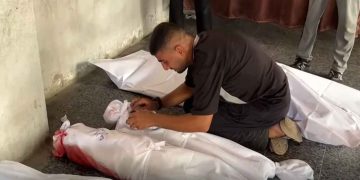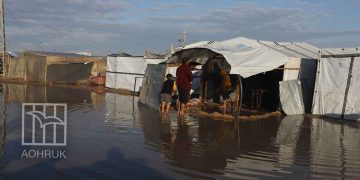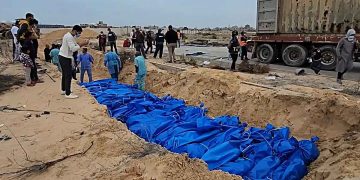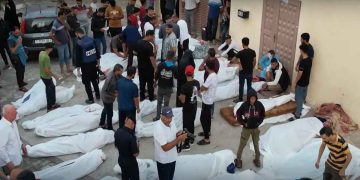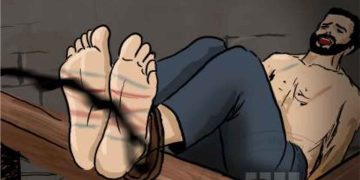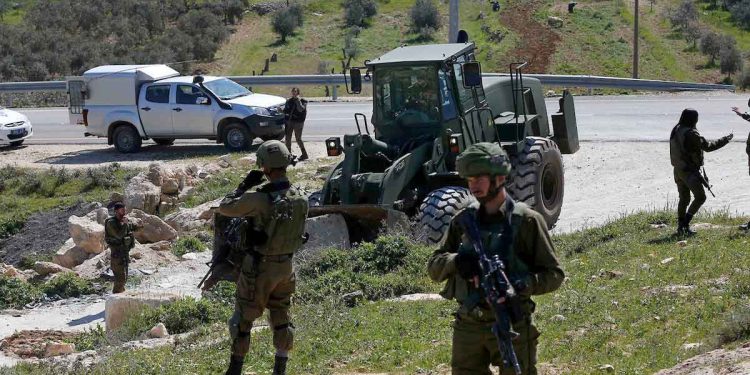Israel’s occupation army has destroyed hundreds of dunums (roughly ⅓ of an acre) of wheat fields, in order to carry out military exercises in the Jordan Valley, at the same time that it has poisoned huge tracts of agricultural land in the Gaza Strip through aircraft manoeuvres.
In a recent investigation for the Israeli newspaper Haaretz, two journalists write that “for a fleeting moment, the white smoke curling up from the taboon mingled with the black smoke disgorged by the bulldozer. It was an optical illusion: a few dozen meters separated the oven from the armoured bulldozer. The bread was baking in the taboon, the machine was demolishing fields of wheat. The scenes blended into a surrealistic image.”
“Indigent farmers living in medieval conditions, without running water and without electricity, in the cold of the Jordan Valley winter, gazed forlornly at the machinery of destruction that had rumbled across their fields that morning in order to flatten them. They had done their plowing and sowing under unbelievable conditions”, write the journalists Gideon Levy and Alex Levac.
And, the article continues, “every few weeks, the Israeli Forces swooped in to tear down their tents, confiscate their tractors and cars, smash the solar panels and water containers, and to expel them for a day or two until the latest training exercise in their fields concluded. The farmers were used to that. What choice do they have? There is no resistance here, they are the weakest of the weak, their only hope here is to extract bread from the good earth.”
“But what happened on Monday of this week was something new for them. Hundreds of dunams of cultivated land were crushed under the treads of the Israel Destruction Forces’ tanks, wheat fields became terrain for military maneuvers, furrows became flatland, and the fertile soil became a training ground. Five hundred dunams (125 acres), maybe more, of loam soil that had been planted and tended, from which buds were already peeking out, turning the earth green, were reduced to a wasteland. The soil was heaped up for use as tank ramps.”
“The vision was hard to bear. A bulldozer thundered back and forth, not missing a furrow, crushing the grain and the fodder, leaving destruction and desolation in its wake as it moved forward. The driver is hidden behind the armored grille, unseen. What goes through his mind as he does his contemptible job? What does he think about as he lays waste the land? Does he love the soil he is ravaging? The beautiful land he is ruining? Its inhabitants, workers of this soil for generations?”
And, the journalists ask, “What do these soldiers tell their families when they get back from their mission? That they had a good day, contributed to the country and its security by destroying crops?”
Israel blocks the residents of nearby Khirbet Ibziq from acquiring motor vehicles and seises those they do own, in addition to their agricultural equipment.
“Here it’s no longer fields across which tanks just passed; here it’s bulldozers that are ripping up the planted soil in order to build ‘ramps,’ as they refer to the mounds created to conceal the tanks that will arrive at night”, explain the journalists. “The bulldozer levels the ground, the scoop piling up the earth into another ramp. On the Gaza Strip border, the IDF poisons fields from the air, at the Jordan Valley border, the IDF uproots fields.”
The Haaretz journalists note that the Palestinian population of Khirbet Ibziq own approximately 800 sheep; the fields are used to grow fodder for their livestock.
“The remains of the previous round of destruction are all around – hardest to bear of all are the solar panels that were crushed, the only source of electricity here. So there’s no running water and no electric power”, the journalists continued.
The bulldozed land is owned by Palestinian families from Tubas, including the family of Muhammad Turkman, 58 years-old, and his cousin, Adel Turkman, 46 years-old. They own and farm these lands, though since they are located within “Area C” of the occupied West Bank, Israel does not allow them to build there.
As the journalists write, “last month, on December 5, the Civil Administration again distributed expulsion orders: ‘Warning about mandatory temporary evacuation from a closed area.’ In the past few months, they have been required to evacuate their tents seven times so that the IOF could train in the area (…) The last time they were ordered out was on December 27. It was a particularly cold day.”


